The Dome Room at Crystal Cave in Sequoia National Park (CA) is one of the larger cave rooms with a number of interesting (and beautiful) cave formations. The Dome Room is named after a large cave formation which resembles the capital building dome.
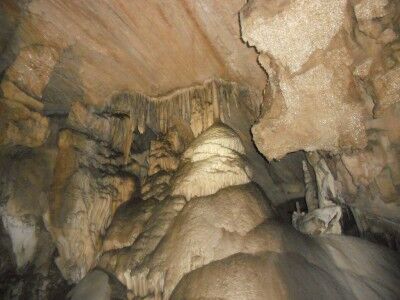

US National Parks & Monuments
The Dome Room at Crystal Cave in Sequoia National Park (CA) is one of the larger cave rooms with a number of interesting (and beautiful) cave formations. The Dome Room is named after a large cave formation which resembles the capital building dome.

There have been several spectacular ice and rock avalanches at Nisqually Glacier in Mount Rainier National Park (WA) this past week. Some have been caught on video. While nature is beautiful, it’s always important to remember that she also is quite powerful so it’s always important to put safety first when exploring:
One of the things I enjoy most about stopping and wandering in new areas I know little about are the unexpected finds. While returning from Crater Lake National Park (OR), I stopped to see the Rogue River Gorge (part of Rogue River – Siskiyou National Forest) to find a living tree stump:
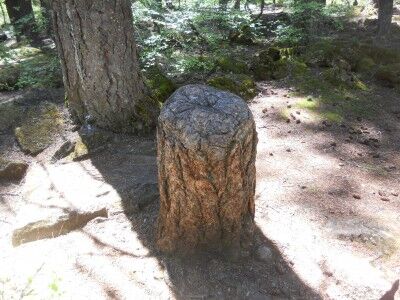
So, how does a tree stump heal itself and survive after the tree has been cut down? An informational sign explains:
The Living Stump
Here on the flat surface of the lava flow, away from the Gorge wall, the trees live as a group rather than as individuals. The roots of these Douglas-firs have grown together, providing each other with nutrients and water. Before it was cut, the roots of this tree had grafted onto those of a neighbor. because of this, the stump continues to live
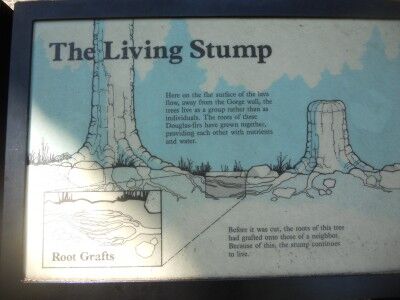
One of the greatest aspects of our National Parks is their ability to show us how the impossible is possible in nature.
When you drive up to the main visitor center (Bear Valley Visitor Center) at Point Reyes National Seashore (CA), the first thing that will catch you eye is five large bottles, which are themselves filled with plastic bottles, sitting in a field:
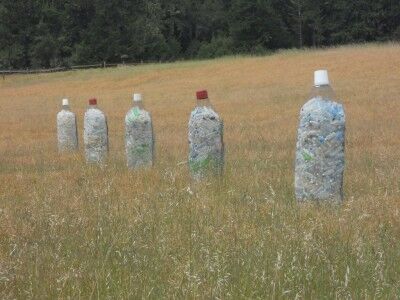
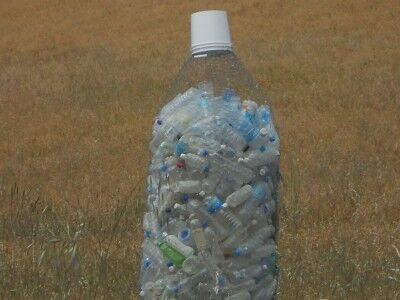
These are part of an art project created by Richard James which he hopes nobody will enjoy. He created the plastic bottle art from the large amounts of trash that he has collected on the shores of Point Reyes National Seashore. The five 8 foot tall bottles that are filled with plastic bottles are just the plastic bottles James found during one year of collecting trash on the shores of Point Reyes. Not all people like the art, but it serves to show where many of the plastic bottles we use end up.
On the fence by the bottles is an explanation of the art:
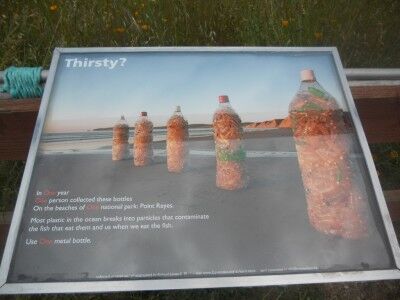
Thirsty?
In One year
One person collected these bottles
On the beaches of One national park: Point Reyes.Most plastic in the ocean breaks into particles that contaminate the fish that eat them and us when we eat the fish.
Use One metal bottle.
I have a policy to always leave the National Parks I visit in better shape than when I arrive. While at Point Reyes, I filled up two large bags with trash that had washed up on the beaches that I walked. It hardly took any time to do this, so I can imagine the amount of trash that James has collected in all the hours that he has spent cleaning the beaches. I hope that we all can get into the habit of leaving every National Park in better shape than when you arrived — and if you haven’t yet purchased yourself a metal water bottle, do it.
I made my first visit to Crater Lake National Park (OR) earlier this year and was greeted with a lot of snow. I thought that another trip on the first day of summer would be a fun idea and quickly discovered that there is still a lot of snow up there with virtually all hiking paths still closed due to snow. Still, that didn’t stop me from taking some beautiful photos:
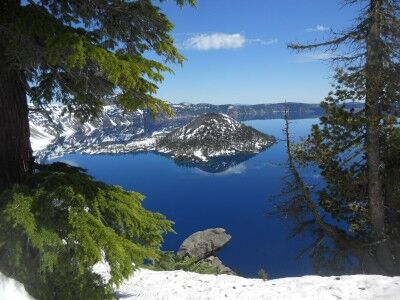
I also shot a short video of Crater Lake from the viewing area just below the visitors center:
While camping is possible and some camp grounds have been cleared of snow, they are still surrounded by as much as 10 feet of snow making for some cold weather camping. For those looking to visit Crater Lake and want to do a bit of hiking and camping, I would wait until well into July for the snow to melt off. I certainly will be back with the hopes of being able to hike some of the trails on my next visit.
On of the many unique (and rare) cave formations found in Crystal Cave in Sequoia National Park (CA) are cave shields. This one has draperies beginning to form as they flow over the cave shield:
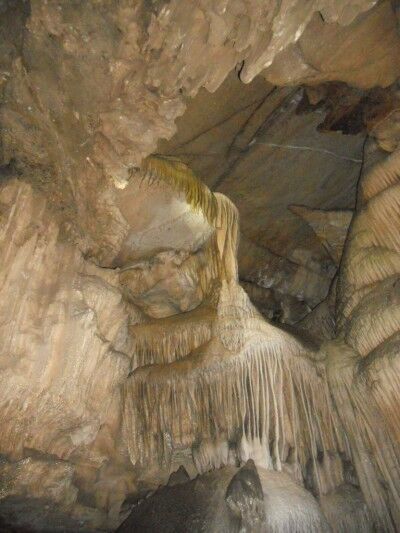
For anyone that is in the Crescent City, CA area, a visit to Stout Grove is well worth the time and effort. This 1/3 mile loop in Jedediah Smith Redwoods State Park (CA — part of Redwood National Park) is a wonderful walk under 300 foot redwoods with lush ferns covering the ground which will take your breath away as you look toward the sky to see if you can see the tops.
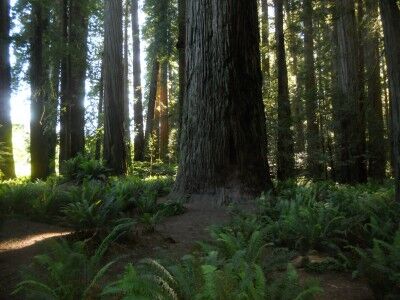
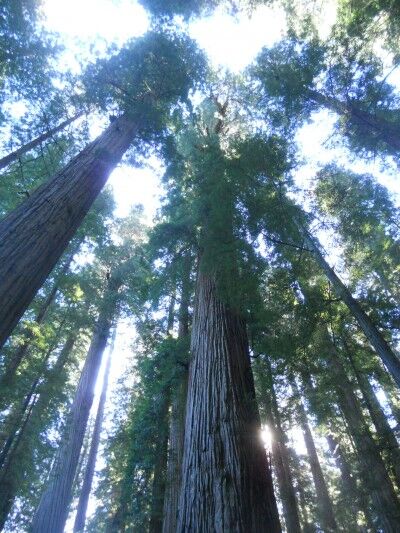
More Photos from Stout Grove hike
A placard at the beginning of the trail gives a brief explanation on how this redwood grove came to be:
Stout Memorial Grove
Stout Grove, a majestic example of an ancient coast redwood forest, is often considered to be the heart of Jedediah Smith Redwoods State Park. In 1929, Mrs. Clara Stout donated this 44-acre grove to the Save-the-Redwoods League to save it from being logged and to memorialize her husband, lumber baron Frank D. Stout. Today, land continues to be added to these northernmost parks through the efforts of the League.
A walk along this loop trail reveals colossal redwoods thriving in rich soil deposited during periodic flooding of the Smith River. Here, waist-high sword ferns carpet the forest floor and normally flared tree bases are covered in river soils. Flood waters inhibit the growth of understory trees and plants seen in other groves, leaving the 300-foot redwoods as the main attraction
Here is a short video clip as I walked a portion of the Stout Grove loop:
Directions: Drive east on Highway 199 and turn right on South Fork Road (about 2 miles past the National Parks Visitors center). Continue .5 miles across 2 bridges — at the “Y” in the road, turn right onto Douglas Park Road. Continue until the pavement ends at which point the road changes to Howland Hill. Continue approximately 1 mile on the gravel road to a paved road on the right — park in the lot and walk down the ramp to the 1/3 mile loop hike.
One of many spectacular formations within Crystal Cave in Sequoia National Park (CA) is the Organ Room. This is a huge cave formation that, when viewed in its entirety, resembles the giant church organs of years gone by.
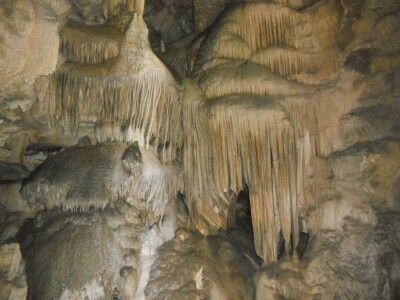
The Organ Room also gives a good lesson on the effect which people have over time in caves. In the below photo you can see that the cave formation is bright white on the right side and a muddy gray on the right. The dingy look of the rock on the left is from the accumulation of human debris (oil from hands touching, skin flakes, etc) left in the cave over time which hasn’t been cleaned.
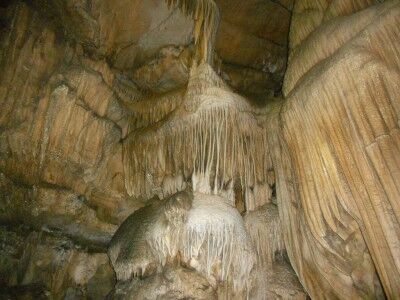
It’s because of this type of damage that the Touching Rock is available at the Crystal Cave entrance and everyone is asked to not touch the formations within the cave.
If you are into large driftwood scenery or photography, Dry Lagoon beach in Humboldt State Park (CA) is a place you want to check out. Located off of highway 101 between Trindad and Orick, there is a one lane road that leads down to a beach parking lot. While most people probably head straight for the waves, it’s the area deeper in that caught my eye. Between a lagoon filled with reeds and the sandy-pebble beach is a a wide stretch of plant life including a large number of wildflowers:
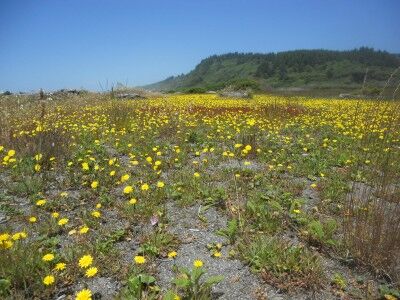
Even better than the wildflowers, are the large redwood tree driftwood logs that have settled into the sand which gives the area an other-worldliness look:
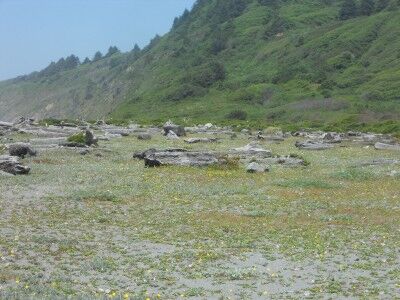
The beach itself is a combination of sand and pebbles / small rocks. Like at Agate Beach, there were a number of people combing through the sea rocks and collecting their favorites.
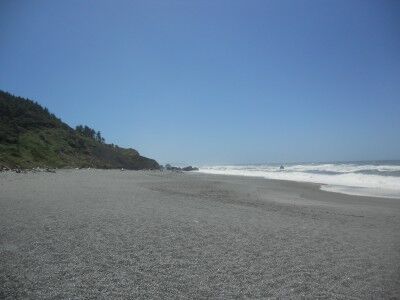
This beach is a nice photography beach, especially those that love driftwood:
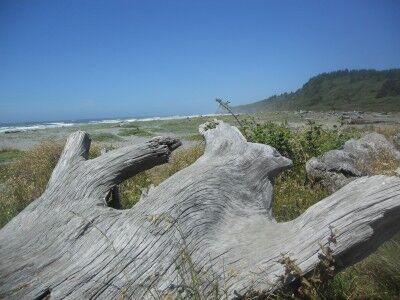
If you like the idea of exploring areas that seem like lost worlds, you will truly enjoy Fern Canyon in Prairie Creek Redwoods state park (CA) which is part of Redwood National Park. While you definitely should take some time to enjoy Gold Bluffs Beach (since many will ignore it), that doesn’t mean that you want to miss Fern Canyon which is about another 2 miles down the road. An informational sign at the trailhead next to the parking lot gives the following description of Fern Canyon:
Millions of years ago, a retreating sea left these coastal bluffs behind. Waters draining to the ocean sculpted the rocky formations into sheer canyon walls. Some of the exquisite ferns now clinging to the steep, shadowy cliffs are ancient species whose ancestry can be traced back 325 million years.
The canyon is now shrouded with lush five-fingered ferns, dark green sword ferns, and delicate lady ferns. Scouring winter floods periodically rush through the canyon, sweeping debris from its floor. Spruce and red alder saplings often survive for a few years on small terrace ledges, but they rarely reach maturity before falling off or being swept away.
Seeping water supply year-round dampness for the dense foliage and provide habitat for a diverse mix of moisture loving creatures such as salamanders, frogs and dippers. Several perennial waterfalls cascade from the canyon rim, adding to the cool moist canyon microclimate.
It’s less than a quarter of a mile to the canyon entrance, and you’ll immediately see that you’re in for a wonderful journey as light makes its way sporadically through the thick foliage:
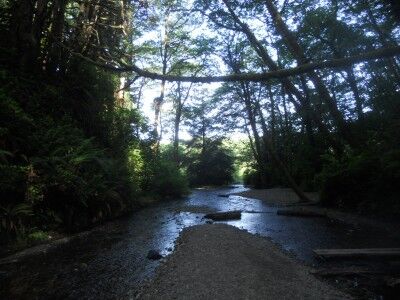
You’ll also realise that it’s worthwhile packing an extra layer (especially if you do the hike in the morning) since the temperature drops a few degrees once you get into the canyon. Apparently the rangers set up wood bridge crossings in the summer so that you don’t get wet from the river as you make your way up the canyon, but those were not in place when I went in mid June. Other hikers had created makeshift crossings with the fallen trees and wood debris in the canyon which meant that it’s possible to survive the canyon hike without getting your shoes wet if you’re very careful. I have pretty decent balance, but there were a few times I almost found my feet in the water (although I did manage to come out dry). It’s definitely a good idea to pack an extra pair of shoes and socks just in case.
Once you enter the canyon, the walls narrow and turn green as ferns hang from top to bottom:
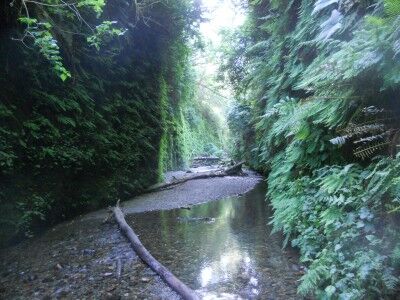
Probably my favorite part of Fern Canyon were the waterfalls. These came over the side of the canyon, dripping their way down a moss covered path more than “falling” to the canyon bottom. When the sunlight hit these, the drops in the moss would sparkly like a thousand diamonds which was an amazing sight. My photo doesn’t even come close to doing it justice:
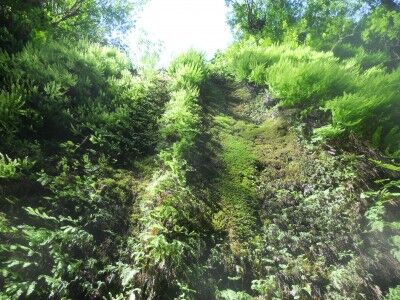
Fern Canyon is part of a 7 mile loop trail (which includes Fern Canyon, Friendship Ridge, West Ridge and Coastal Trail) which takes about 4 hours to hike, but you can easily hike just Fern Canyon up and back if your time is limited. Fern Canyon itself isn’t that long (about half a mile), but it does take time since you’re constantly stopping to take photos, admire the scenery and crawling across logs to stay dry. This is definitely a must see stop if you visit Redwood National Park. For those interested, here are more Fern Canyon photos